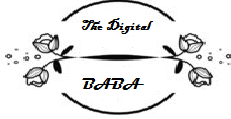
Advancements in the Retail Delivery System
In today’s fast-paced society, there are several ways in which technology is changing the way we shop and interact with businesses. One of those is the advancement of the online retail delivery system. We will see an increase in the use of RFID tags, “smart” digital price tags, augmented reality, and even Chatbots.
Clickoot
If you want to make sure your retail delivery system store is always ready to meet your customers’ needs, consider using Clickoot. This system offers smart order management and competitive pricing. You can also ensure a fast delivery time.
2. Smart order management
If you are a retailer in the United States or Canada, then you may be interested in finding a retail delivery system that helps you fulfill orders in a timely manner. This is especially important for customers who want their purchases quickly and conveniently. A retail delivery system can help you manage order processing and inventory in real-time. In addition to being able to track orders, a system can also update Quickbooks, create an invoice and generate a shipping label. Orders can be processed in a single or multi-distribution center, and a wide variety of fulfillment types are supported. The best retail delivery system should support the needs of a growing retail business and help you streamline the ordering and delivery process.
Today’s retailers are experiencing increased demands from their customers. Customers expect fast turnaround times, efficient order fulfillment, and reliable customer service. Keeping up with these expectations is a major challenge for retailers. With modern order management software, retailers can easily adapt to the needs of their business.
Omni-channel retailing will become second nature
Omni-channel retailing is a strategy that connects all of your customer’s shopping experiences and channels. This can include mobile ordering, eCommerce, in-store shopping, and more. By providing a consistent brand experience, omnichannel retailing can help you to attract and retain a loyal customer base.
However, omnichannel retailing is not without its challenges. The process involves inventory control, order fulfillment, and other back-of-house operations. In addition, it requires a technology foundation. With so many channels available, it is important to ensure that your customers are receiving an enjoyable and integrated customer experience.
Using technology to create an interactive, engaging, and informative in-store experience can be an effective way to provide customers with an omnichannel experience. For example, Timberland uses interactive displays to allow customers to build digital carts and create a customized customer journey. They also use TouchWalls to gather product information.
Augmented reality
The use of augmented reality (AR) has been revolutionizing the way we shop. From furniture to makeup, this technology helps consumers understand how a product fits and looks in its own environment. It can also help businesses increase conversions and sales.
In recent years, major retail companies have started experimenting with AR. Ikea’s “Place” app uses augmented reality to allow customers to virtually try on their furniture. And L’Oreal has launched an augmented reality makeup range. Other brands, such as Gucci and Dior, have also entered the AR market.
AR use to boost sales. And improve a retailer’s image. It also uses to reduce purchase anxiety for new online customers. It can be time-consuming to develop and implement.
AR can be helpful in retail, but brands need to determine whether it provides any value. They also need to evaluate the potential impact of the technology on their customer evaluation.
Chatbot functionality
Using chatbots in the online retail delivery system allows retailers to handle more customers in a day. It frees up customer service reps and processes secure payments. Moreover, it provides an enhanced customer experience and increases revenue.
Retailers can use chatbots to provide information about products, prices, and availability. They can also direct customers to specific pages, such as the checkout page. Customers can also be offered personalized recommendations. Some retail chatbots have also been used to manage loyalty points and alert clients about upcoming promotions.
Using a chatbot in the online retail delivery system gives retailers the ability to upsell shoppers and encourage them to spend more. For instance, Aerie, a clothing spin-off of American Eagle Outfitters, uses a chatbot to make personalized product recommendations. At the same time, the store promotes other discounts and offers.
RFID tags
Using RFID tags in the online retail delivery system can help make your store operations more efficient and productive. This technology can be used for asset tracking, inventory management, and more.
One of the main advantages of RFID is its ability to improve stock accuracy. This allows retailers to maintain the quality of their product and ensure that it is at the right place at the right time. It also reduces the chances of package theft.
The biggest obstacle to the use of RFID in the retail industry is the high cost. While the cost of tags is now around $3, it was $50 in the early 2000s. However, the benefits of RFID can still be significant.
In addition to reducing costs, RFID tags can also speed up the checkout process. For example, if a customer wants to pick up a pair of jeans from the store, they can use an RFID reader to scan the item.
‘Smart’ digital price tags
Electronic Shelf Label (ESL) technology provides price information in retail stores. Its advantage is that it allows retailers to update prices in a short amount of time.
Electronic shelf labels use in both physical stores and online stores. They are available in a variety of sizes and colors. The labels also updated remotely. This saves money in labor costs.
Electronic shelf tags have proven to be a reliable alternative to paper price labels. In addition to providing pricing, they can display inventory levels, promotions, and product descriptions. These tags can be easily integrated with the POS system.
However, the process of switching to electronic smart labels requires more than just software and hardware installation. There are also training and upfront costs.


